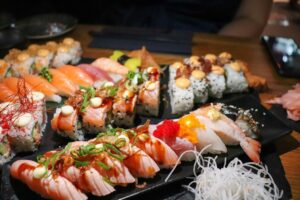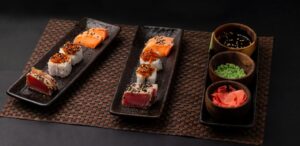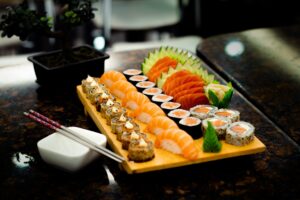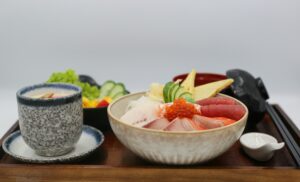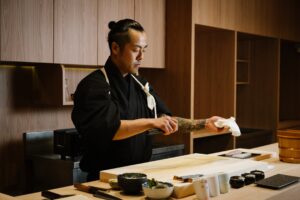
Singapore's Best Food: A Culinary Journey Through Japanese Influences and Traditions
In a city where UNESCO-recognized hawker culture intersects with over 1,000 Japanese restaurants, Singapore represents the pinnacle of culinary fusion. This remarkable transformation from a humble trading port to Asia’s premier food destination tells a story of cultural integration that extends far beyond simple restaurant expansion—it’s a testament to how Japanese culinary philosophy has fundamentally reshaped singapore’s best food scene.
Since the 1990s, Singapore has witnessed an unprecedented culinary revolution. What began as a modest collection of 200 Japanese establishments in 2000 has exploded into a sophisticated dining ecosystem encompassing everything from $15 hawker stalls serving Japanese-influenced noodles to $500 best omakase Singapore experiences that rival Tokyo’s finest. This extraordinary growth reflects not just demand, but a deep appreciation for the Japanese principle of “shokunin”—the craftsman’s spirit that elevates every aspect of food preparation.
The numbers tell a compelling story: according to the 2023 Michelin Guide, 12 of Singapore’s 52 starred restaurants feature Japanese or Japanese-influenced cuisine. More importantly, these establishments have fundamentally changed how singapore’s best food is conceived, prepared, and presented across all price points. From the precision knife work now standard in high-end Chinese restaurants to the dashi-making principles enhancing traditional laksa broths, Japanese influence permeates every layer of the city’s culinary landscape.
The Japanese Revolution in Singapore’s Culinary Scene
From 200 Japanese establishments in 2000, Singapore now hosts over 1,000 Japanese restaurants as of 2024, making it one of the highest concentrations outside Japan itself. This growth coincided with Singapore’s emergence as a regional financial hub, attracting Japanese corporations and expatriates who demanded authentic dining experiences. However, the true revolution lay not in authenticity alone, but in how local chefs began incorporating Japanese techniques into traditional preparations.
The economic impact has been substantial. The Singapore Tourism Board reports that Japanese cuisine ranks among the top three most consumed foreign cuisines locally, generating significant revenue across the hospitality sector. More significantly, this influence has elevated cooking standards across all cuisines, with local chefs increasingly adopting Japanese approaches to ingredient sourcing, knife skills, and flavor balance.

Michelin-Starred Japanese Excellence
At the apex of singapore’s best food scene, Michelin-starred Japanese restaurants demonstrate how traditional techniques can be adapted without losing their essential character. These establishments represent more than fine dining—they’re laboratories of culinary innovation where Japanese masters collaborate with local ingredients and international influences to create entirely new dining paradigms.
Waku Ghin, helmed by Tetsuya Wakuda, pushes boundaries further by incorporating European techniques alongside Japanese precision. The restaurant’s signature marinated Botan shrimp with caviar and seaweed demonstrates how Japanese ingredient philosophy—emphasizing natural flavors and seasonal timing—can enhance non-Japanese preparations. Priced at $450 SGD for the full experience, Waku Ghin represents culinary diplomacy at its finest.
Shoukouwa offers perhaps the most traditional approach among Singapore’s Japanese Michelin stars, yet even here, adaptation is essential. Chef Koichiro Oshino’s kaiseki menus incorporate tropical fruits and Southeast Asian vegetables into classical Japanese seasonal progression. The restaurant’s winter menu features durian—Singapore’s most polarizing fruit—prepared using traditional Japanese preservation techniques, creating flavors that honor both cultures.
These establishments average $350-500 SGD per person for omakase experiences, reflecting not just ingredient costs but the extensive training required to master these techniques. Many chefs spend years in Japan before returning to Singapore, bringing authentic knowledge that they adapt to local conditions and tastes.
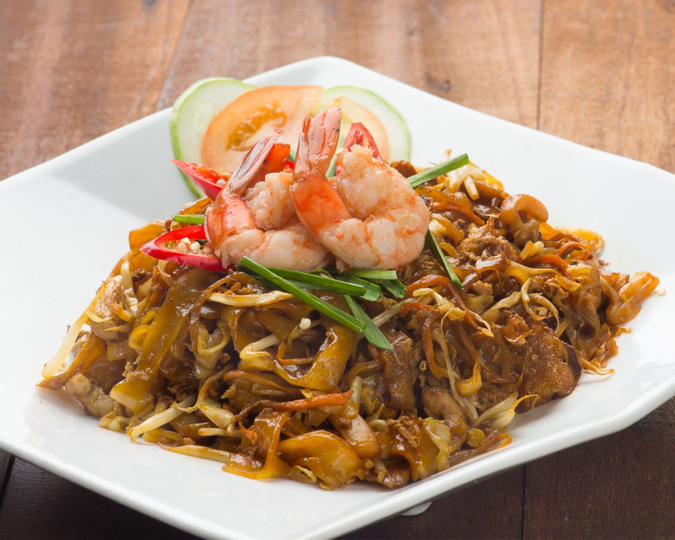
Mid-Range Japanese Dining Innovations Featuring Char Kway Teow
The true genius of Singapore’s best food scene emerges in its mid-range Japanese establishments, where accessibility meets authenticity to create dining experiences that would be considered exceptional in any global city. These restaurants, typically ranging from $25-80 SGD per person, represent the democratic spirit of Singapore’s food culture—high-quality Japanese techniques made available to everyday diners.
Ippudo’s arrival in 2008 marked a watershed moment, introducing Singapore to authentic tonkotsu ramen while adapting recipes for local taste preferences. The restaurant’s success spawned numerous local competitors like Menya Saimi, which specializes in tsukemen (dipping noodles) enhanced with local chili oils and bean sprouts that add textural complexity impossible to achieve with traditional Japanese vegetables alone.
High-End Japanese Restaurants
Singapore’s luxury Japanese dining scene extends well beyond Michelin recognition, encompassing establishments that have fundamentally redefined what constitutes Singapore’s best food at the premium level. These restaurants represent a fascinating study in cultural translation—how traditional Japanese concepts of seasonality, presentation, and hospitality adapt to Singapore’s unique environment and international clientele.
Nobu Singapore at Marina Bay Sands is a global luxury brand that blends traditional Japanese flavors with bold, contemporary influences from Peru. The menu showcases a sophisticated combination of Japanese ingredients and innovative preparation.

Les Amis has integrated Japanese-trained chefs into its traditionally French kitchen, resulting in dishes that showcase superior knife work and ingredient respect characteristic of Japanese cuisine. Their signature duck breast benefits from Japanese aging techniques, while desserts incorporate wagashi presentation principles with French flavor profiles.
Sushi Masa deserves particular recognition for its innovative approach to traditional Edomae techniques. Chef Masa Takahashi’s philosophy centers on what he calls “tropical adaptation”—using Singapore’s year-round warmth to develop unique rice aging processes impossible in Japan’s variable climate. The restaurant sources premium ingredients from multiple countries: Hokkaido uni, Norwegian salmon, and locally-caught grouper all appear on seasonal menus.
These establishments typically require reservations weeks in advance and represent singapore’s position as a global dining destination where traditional boundaries dissolve in favor of culinary excellence.

Hawker Centres and Stalls Embracing Japanese Techniques
Menya Kokoro at Tanjong Pagar Market represents this evolution perfectly. Chef-owner Hiroshi Yamashita spent fifteen years in Tokyo ramen shops before bringing authentic techniques to Singapore’s hawker environment. His tonkotsu ramen, priced at just $12 SGD, requires 18-hour bone simmering that produces broths indistinguishable from renowned Tokyo establishments. The addition of local fish cake and crunchy bean sprouts creates textural variety that enhances traditional Japanese preparations while satisfying local preferences for diverse textures.
Golden Mile Food Centre features multiple stalls offering Japanese-style fried chicken alongside traditional zi char (economy rice) dishes, with vendors using authentic double-frying techniques that create the characteristic light, crispy textures associated with quality karaage. These preparations often incorporate local spices and marinades, creating hybrid dishes that honor both traditions. Some food stalls also serve fried tofu as a crispy, flavorful side dish, perfectly complementing both Japanese and local preparations.
The adaptation of onigiri (rice ball) concepts has been particularly creative. Several hawker stalls now offer rice balls filled with traditional Singaporean preparations like char siew, curry chicken, and beef rendang, using Japanese rice preparation methods and nori wrapping techniques. These fusion creations, typically priced under $5 SGD, represent street food innovation at its finest—familiar flavors presented through foreign techniques that enhance both taste and portability.
Vendors increasingly employ Japanese-style timing and temperature control methods, resulting in improved texture and consistency that customers have come to expect even at the most casual dining level.
Traditional Singaporean Dishes like Hainanese Chicken Rice Enhanced by Japanese Methods
The most fascinating aspect of Singapore’s best food evolution lies in how Japanese techniques have enhanced rather than replaced traditional local preparations. This represents cultural exchange at its most sophisticated—foreign methods serving local flavors to create entirely new categories of dishes that honor both traditions.
Hainanese chicken rice exemplifies this evolution. Traditional preparation methods involving slow-poaching chicken and cooking fragrant rice in chicken broth have been refined using Japanese temperature control techniques and precise timing methods. The accompanying chili sauce and dark soy sauce preparations benefit from Japanese fermentation knowledge, creating more complex flavor development over time. The dish is typically served with both poached and roasted chicken, and the flavorful rice cooked with chicken broth is a key highlight.
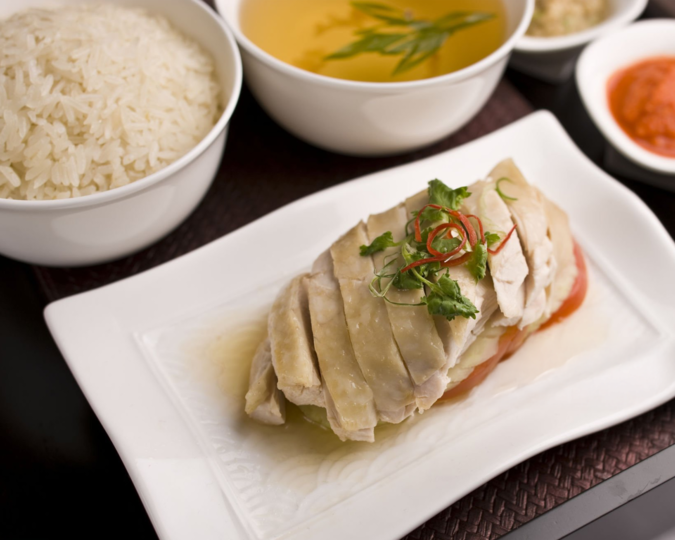
Chili crab presentations have been revolutionized through Japanese knife skills and plating aesthetics. High-end establishments now serve chili crab preparations that incorporate Japanese presentation principles—clean plating, color contrast, and precise portion control—while maintaining the robust coconut milk and spicy chili sauce that define the dish. The traditional accompaniment of soft boiled eggs has been enhanced through Japanese egg preparation techniques that achieve perfect texture consistency. This popular dish is a beloved part of Singaporean cuisine, often enjoyed with spicy sauce and accompanied by fried mantou buns.
Laksa preparation has perhaps benefited most from Japanese influence. The complex broth traditionally made with coconut milk, dried shrimp, and various aromatics now incorporates dashi-making principles learned from Japanese cuisine. This technique produces deeper umami development while maintaining traditional flavor profiles. The rice noodles benefit from Japanese timing precision, achieving optimal texture that complements rather than competes with the rich broth. Laksa reflects Chinese and Malay influences, and the flavorful broth is enhanced by Japanese dashi techniques.
Char kway teow demonstrates how Japanese wok techniques can enhance traditional stir-frying methods. The flat rice noodles now receive precise heat control that achieves better wok hei (breath of the wok) while incorporating Japanese timing principles that ensure optimal texture for accompaniments like chinese sausage, fish cake, and oyster omelettes. Traditional ingredients like dark soy sauce and pork lard remain central, but preparation methods have achieved new levels of consistency. The dish is traditionally cooked in a large wok, is stir fried with pork lard, and variations like fried kway teow and white carrot cake are also popular at hawker centres.
Carrot cake (chai tow kway) is made with rice flour and radish, and both black and white carrot cake versions are available.
What Else to Eat in Singapore
Other traditional favorites include bak kut teh (a pork rib soup with herbs), roti prata (a crispy flatbread served with curry dipping sauce), and steamed rice cakes like chwee kueh, which are often topped with preserved radish. Peranakan food, known for its fusion of Chinese and Malay flavors, is another example of Singapore’s multicultural cuisine.
Desserts like shaved ice (ice kacang) are popular for their refreshing qualities, often topped with condensed milk and palm sugar. Kaya toast, typically served with soft boiled egg and coffee or tea at a traditional coffee shop, is a classic Singaporean breakfast.
Nasi lemak is often made with basmati rice or other fragrant rice varieties, and is served with accompaniments like fried fish, chicken curry, and spicy sambal. Oyster omelette, made with egg and fresh oysters, is a beloved street food, and dishes like fried tofu and pork slices are common in noodle and rice dishes. Oyster sauce is used to enhance the savory flavors of many stir-fried dishes.
Peranakan food and other beloved dishes are found at food stalls and hawker centres throughout Singapore, delighting the taste buds of locals and visitors alike.

Japanese Ingredient Integration
The integration of Japanese ingredients into singapore’s best food represents more than mere fusion—it demonstrates how ingredient philosophy can transcend cultural boundaries to enhance existing culinary traditions. This integration has occurred across all price points and dining styles, from hawker stalls incorporating miso into traditional broths to fine dining establishments featuring wagyu beef in Southeast Asian preparations.
Miso, mirin, and sake have become standard ingredients in Singapore’s professional kitchens, used not just in Japanese dishes but to enhance traditional Chinese, Malay, and Indian preparations. Local chefs have discovered that miso’s umami properties complement traditional fermented shrimp paste used in many Southeast Asian dishes, while mirin’s subtle sweetness enhances the complex spice blends characteristic of local cuisine. Many hawker stalls now incorporate these ingredients into traditional sauces and marinades, creating deeper flavor development without altering fundamental taste profiles.
Japanese vegetables like daikon radish, napa cabbage, and shiitake mushrooms have become staples in local cuisine, valued for their texture and ability to absorb flavors. These ingredients appear in everything from traditional steamboat preparations to innovative salad combinations that pair Japanese vegetables with local herbs like laksa leaves and Vietnamese mint. The adoption of these vegetables has been facilitated by local farms that now cultivate Japanese varieties specifically for Singapore’s restaurant industry.
Wagyu beef and premium Japanese seafood availability at Marina Bay Fish Market has democratized access to ingredients once reserved for the highest-end establishments. Local suppliers now offer multiple grades of wagyu, from premium A5 beef for luxury restaurants to more affordable grades suitable for hawker stall preparations. This availability has led to creative adaptations like wagyu satay, grilled meat skewers that use traditional Malaysian marinades and peanut sauce with Japanese beef quality.
Japanese rice varieties and preparation methods have influenced local rice dishes beyond Japanese restaurants. The emphasis on rice quality and proper preparation techniques has elevated traditional dishes like nasi lemak, where Japanese short-grain rice varieties create superior texture when cooked with coconut milk and pandan leaves. Similarly, the precision timing and water ratios characteristic of Japanese rice preparation have improved consistency in traditional Chinese rice dishes.
Seasonal menu concepts borrowed from Japanese kaiseki philosophy have introduced Singapore diners to ingredient-driven menu planning that changes throughout the year. This approach, uncommon in Singapore’s traditionally stable tropical climate, has led to greater appreciation of subtle seasonal variations in imported ingredients and has encouraged local farms to develop specialty crops that provide seasonal variety.
Where to Experience the Best Japanese-Influenced Food
Singapore restaurants offer a diverse range of Japanese-influenced cuisine, from high-end omakase to casual izakayas. Understanding these regional differences is essential for anyone seeking to experience singapore’s best food across its various manifestations.
Orchard Road represents Singapore’s luxury shopping and dining district, home to high-end Japanese establishments within ION Orchard and Takashimaya. Shinji by Kanesaka offers traditional Edomae sushi in a setting that rivals Tokyo’s finest establishments, while Hashida provides kaiseki experiences that incorporate seasonal ingredients flown daily from Japan. These establishments typically require advance reservations and represent Japanese dining at its most formal, with omakase experiences ranging from $250-400 SGD per person.

Marina Bay area concentrates Singapore’s most internationally recognized dining scene, with Japanese restaurants at Marina Bay Sands and The Fullerton Hotel offering spectacular views alongside exceptional cuisine. Some of the most renowned restaurants in Singapore are located in these districts, attracting both locals and tourists seeking exceptional dining experiences.
Chinatown provides perhaps the most authentic Singapore experience, where traditional hawker stalls at Maxwell Food Centre incorporate Japanese techniques into local preparations. This district offers the best opportunity to experience singapore’s food evolution at street food prices, with stalls serving everything from Japanese-influenced chicken rice to fusion noodle preparations that cost under $10 SGD.
Little Tokyo along Boat Quay represents Singapore’s most concentrated Japanese dining area, with authentic establishments ranging from casual izakayas to formal kaiseki restaurants. This riverside district offers the advantage of variety within walking distance, making it possible to experience multiple dining styles in a single evening.
Tanjong Pagar has emerged as Singapore’s most exciting Japanese food destination, combining traditional establishments with innovative fusion concepts. The district’s conversion from business to dining destination has attracted young Japanese chefs experimenting with fusion concepts while maintaining technical excellence.
Essential Food Experiences by District
Clarke Quay specializes in Japanese drinking culture, with authentic izakayas and sake bars that offer comprehensive introductions to Japanese hospitality principles alongside traditional small plates. These establishments typically feature extensive sake selections and emphasize the Japanese concept of nomihoudai (all-you-can-drink) adapted to Singapore’s regulatory environment.
Bugis has developed into Singapore’s center for Japanese bakeries and dessert culture, introducing wagashi (traditional sweets) and matcha-based desserts to local palates. This district offers the best opportunity to experience Japanese sweets culture, including seasonal specialties that change throughout the year according to Japanese calendar traditions.
Dempsey Hill provides upscale Japanese dining in converted military barracks that offer unique atmosphere alongside exceptional cuisine. The district’s restaurants benefit from spacious settings and mature gardens that create dining environments impossible to replicate in Singapore’s urban core.
East Coast specializes in Japanese-influenced seafood restaurants that combine local catches with Japanese preparation methods. These establishments offer perhaps the best opportunity to experience fusion cuisine at its most successful, where Japanese techniques serve local ingredients without overwhelming their natural characteristics.
Each district represents different aspects of singapore’s best food evolution, making it possible to experience the full spectrum of Japanese influence within Singapore’s compact geography.
The Future of Japanese-Influenced Singaporean Cuisine
The trajectory of Singapore’s best food suggests continued evolution rather than stabilization, with emerging trends indicating that Japanese influence will deepen rather than plateau. This evolution reflects Singapore’s position as a global city where culinary innovation occurs at an accelerated pace, driven by international talent and sophisticated local palates that demand constant improvement.
The next time you find yourself in Singapore, consider following this culinary journey from hawker centres to Michelin-starred establishments. You’ll discover that Singapore’s best Japanese food represents more than an omakase journey—it’s a window into how cultures can blend to create experiences greater than the sum of their parts.

Traditional Japanese Sweets and Modern Desserts
The delicate art of wagashi, traditional Japanese confections, requires adaptation to Singapore’s humid tropical climate while maintaining the aesthetic beauty and seasonal symbolism that defines these edible works of art. Master confectioners in Singapore have developed techniques for working with traditional ingredients like mochi, anko (sweet red bean paste), and delicate sugar work despite the challenging environmental conditions.
Traditional wagashi preparation emphasizes seasonal themes and natural beauty, with each confection designed to evoke specific times of year or natural phenomena. In Singapore’s context, confectioners create new seasonal interpretations that might reference tropical flowers, local fruits, or monsoon patterns while maintaining traditional aesthetic principles and preparation techniques.
Modern Japanese dessert innovations in Singapore often incorporate local tropical fruits in sophisticated presentations that honor both Japanese aesthetic principles and local ingredient characteristics. Mango, durian, and other regional fruits are transformed into elegant desserts using traditional Japanese techniques for texture manipulation, temperature contrast, and visual presentation.
Matcha culture has found particularly enthusiastic acceptance in Singapore’s café scene, with numerous establishments offering traditional tea ceremony experiences alongside modern matcha-flavored beverages and desserts. The bitter, earthy flavor of quality matcha provides a sophisticated alternative to sweeter dessert options while offering the health benefits and cultural connection that appeals to health-conscious Singapore diners.
Sake, Whisky, and Japanese Beverages
The appreciation of sake in Singapore has grown substantially as diners develop more sophisticated understanding of this complex beverage category. Quality sake selection requires understanding of different brewing styles, rice varieties, and aging processes that influence flavor profiles. Junmai, honjozo, ginjo, and daiginjo categories each offer distinct characteristics that pair with specific dishes and dining occasions. Knowledgeable sake sommeliers in Singapore help diners navigate these options while providing education about traditional appreciation methods.
Japanese whisky culture has exploded in popularity, with Singapore’s affluent dining scene embracing both affordable daily drinking whiskies and ultra-premium aged expressions. The craftsmanship and attention to detail that characterizes Japanese whisky production aligns perfectly with the values that define Japanese cuisine, creating natural synergies between food and beverage experiences.
Traditional tea ceremony culture finds expression in both formal and contemporary settings throughout Singapore. While few establishments offer complete formal tea ceremony experiences, many incorporate elements of traditional tea preparation and service that enhance the dining experience and provide cultural education for interested guests.
A Culinary Bridge: Embracing Japanese and Singaporean Dishes
As locals and visitors eat in Singapore, the continual exchange of ideas and flavors results in iconic dishes—where Japanese soft boiled eggs find a place atop nasi lemak, where fried chicken is served both karaage-style and with local chili sauce, and where desserts blend coconut jam with matcha.
In the end, Japanese dishes in Singapore are a vital part of a delightful blend of tradition, innovation, and everyday pleasure. Seek them out—at a bustling food court, a neighborhood coffee shop, or among hawker stalls at lunchtime—and savor the journey across cultures, plate by plate.
With every meal, Singapore proves that its food scene is endlessly adaptable, always delicious, and warmly welcoming. Whether it’s fragrant rice or a bowl of ramen, a sweet mochi dessert or a golden-brown slice of fried chicken, Singapore’s embrace of Japanese cuisine adds even more richness to the city’s culinary tapestry.

